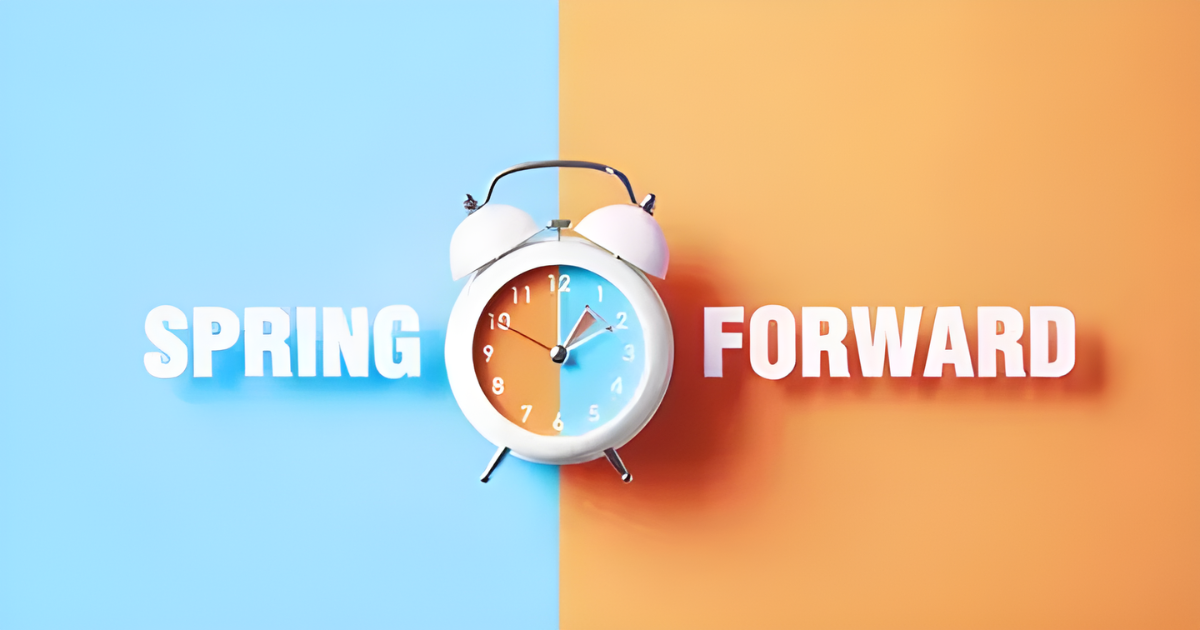Introduction
Clocks spring every spring, marking the beginning of Daylight Saving Time (DST). This practice of setting clocks one hour ahead temporarily disrupts our sleep patterns but offers longer daylight hours in the evenings.
Digital News Planet illuminates Daylight Saving Time, exploring its history, purpose, impact, and tips for adjusting during the spring-forward transition.
A Brief History: When Did We Start Spring Forward?
The concept of Daylight Saving Time dates back to the 18th century, but it wasn’t widely implemented until World War I. Germany first adopted DST in 1916 to conserve energy during wartime.
Many countries abandoned DST after the war, but it reappeared in various forms throughout the 20th century. The Uniform Time Act of 1966 established the current American custom of moving forward on the second Sunday in March and retreating backward on the first Sunday in November.
Why Do We Spring Forward? (The Purpose of Daylight Saving Time)
Using daylight more efficiently is the main goal of Daylight Saving Time. By shifting clocks one hour forward in the spring, we gain an extra hour of sunlight in the evening, allowing people more time to enjoy outdoor activities after work or school.

Proponents of DST argue that it offers several benefits, including:
- Reduced energy consumption: With more daylight hours in the evening, there’s potentially less reliance on artificial lighting, leading to energy savings.
- Boosted economic activity: Extended daylight hours might encourage people to spend more outdoors, potentially benefiting businesses that rely on evening foot traffic.
- Increased recreational opportunities: More daylight hours provide more time for outdoor activities like sports, gardening, and evening socializing.
Spring Forward: The Effects of Daylight Saving Time on Our Bodies
Spring forward can disrupt our sleep patterns, leading to short-term negative effects such as:
- Fatigue: Losing an hour of sleep can lead to grogginess and difficulty concentrating during the day.
- Irritability: Sleep deprivation can affect our mood, making us more susceptible to frustration and irritability.
- Disrupted circadian rhythm: Our bodies have internal clocks that regulate sleep-wake cycles. Adjusting to the time change can disrupt this rhythm, leading to temporary sleep issues.
However, most people adjust to the spring-forward transition within a few days.
Tips for a Smooth Spring Forward Transition
Here are some tips to help you adjust to the spring forward time change:
- Adjust your sleep schedule gradually: In the days preceding the time change, aim for a 15–30 minute bedtime and wake-up time each day.
- Maximize sunlight exposure: To assist you in managing your circadian rhythm, spend some time outside in the early sunshine.
- Maintain a consistent sleep routine: Make sure you go to bed and wake up at the same time every day, including on the weekends, to allow your body some adjustment time.
- Relaxing bedtime routine: Establish a relaxing routine that includes taking a warm bath or reading a book to wind down before sleep.
- Limit caffeine and alcohol: Avoid consuming alcohol and caffeine right before bed since they might disrupt your sleep.
By following these tips, you can minimize the disruption caused by spring forward and enjoy the benefits of longer evening daylight hours.
When Does Spring Forward Occur? (The Dates and Details)
Daylight Saving Time kicks in for most of the United States on the second Sunday in March at 2:00 am local standard time. Since the clocks are moved forward by one hour, 2:00 am becomes 3:00 am.
On November 1st, Daylight Saving Time ends at 2:00 am local time. Clocks then fall back one hour, essentially reverting to regular time.
It’s important to note that not all states or territories in the United States observe Daylight Saving Time. Arizona (except for the Navajo Nation), Hawaii, Puerto Rico, the Virgin Islands, Guam, American Samoa, and the Northern Mariana Islands do not participate in DST.

Conclusion
Daylight Saving Time remains a controversial topic. While some find the benefits of extended evening daylight hours outweigh the drawbacks, others argue for abolishing the practice altogether.
Spring forward can disrupt our sleep patterns, but most people adapt within a few days with proper preparation and adjustments.
Ultimately, the debate surrounding Daylight Saving Time hinges on balancing potential benefits with the associated costs. As the conversation continues, staying informed and advocating for your preferred approach is key.
Digital News Planet encourages you to explore the information and form your opinion on Daylight Saving Time.
-
1. Why do we still have Daylight Saving Time?
The use of Daylight Saving Time is a subject of ongoing debate. While some argue for its benefits in energy conservation and economic activity, others highlight the potential drawbacks, like disrupted sleep patterns and minimal energy savings in modern times.
-
2. Is Daylight Saving Time going away?
Several proposals have been made to abolish Daylight Saving Time or make it permanent in the United States. In 2023, the Sunshine Protection Act was introduced in the Senate, aiming to make Daylight Saving Time permanent year-round. However, the bill ultimately stalled in the House.
-
3. What are the arguments against Daylight Saving Time?
Opponents of DST raise several concerns, including:
Negative health impacts: Moving forward in time can disturb sleep patterns, harming health, especially for vulnerable groups like children and older people.
Minimal energy savings: Studies suggest that the energy savings associated with DST are minimal, especially with advancements in lighting technology.
Economic disruption: Seasonal changes in daylight hours can disrupt business operations and tourism industries in certain regions.
Public safety concerns: Studies indicate that a lack of sleep in the days after spring forward indicates a rise in employment injuries and road accidents. -
4. What are some alternatives to Daylight Saving Time?
Several alternative proposals have been suggested, including:
Permanent Standard Time: This option would eliminate the time changes, maintaining standard time year-round.
Double Daylight Saving Time: This proposal would involve setting clocks forward two hours in the spring and back one hour in the fall, resulting in even more evening daylight hours. -
5. How can I stay informed about potential changes to Daylight Saving Time?
Follow news sources and government websites to stay informed about potential changes to Daylight Saving Time. Digital News Planet will continue to provide updates on any future developments related to DST.





